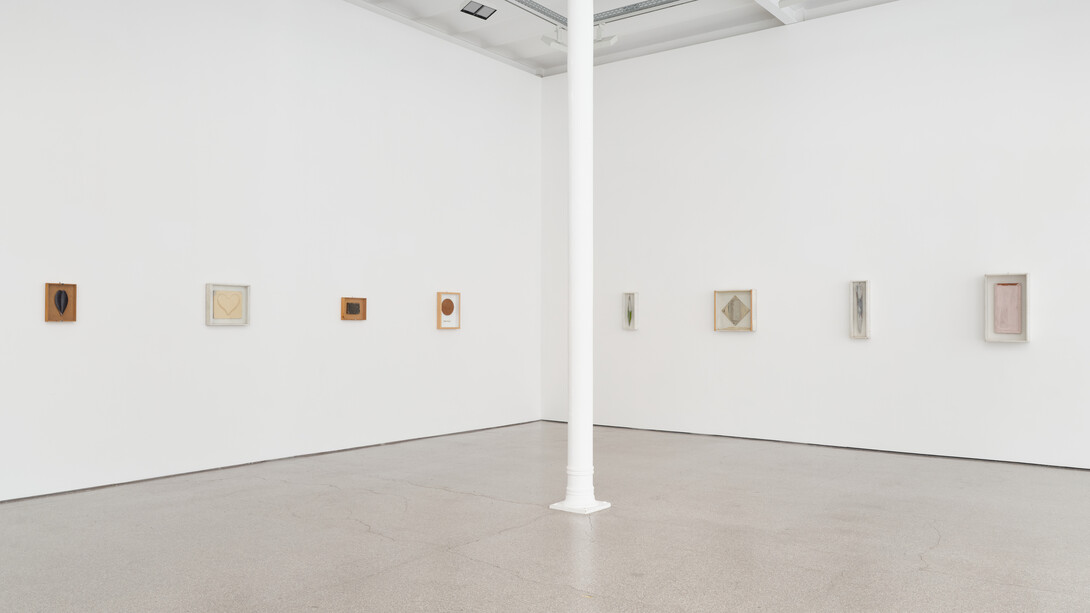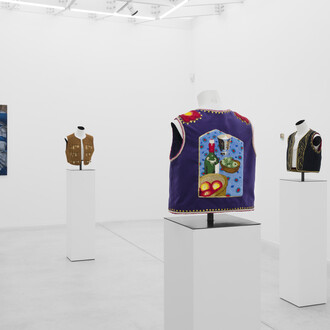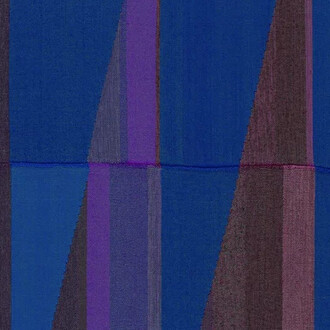This presentation brings together a series of early works by Jef Geys (1934–2018), created between 1961 and 1970. These are compact, carefully constructed pieces that not only mark a crucial phase in his oeuvre, but also provide insight into the development of his visual language: in which form, context and meaning are in constant negotiation.
The 1960s not only mark the beginning of Geys’ artistic practice, but also the germination of ideas that would define his later work. In these small sculptures, objects and reliefs, he explores how a work of art relates to its environment and how presentation and framing generate meaning. Each piece here is placed in a wooden box, sometimes painted, sometimes left rough or bare, sometimes enclosed with glass, making the boundary between object and context explicitly visible. The box is not a passive container, but a structural and conceptual element: it determines the rhythm of viewing and makes the boundary the core of the experience.
Within this framing, the first signs of the fruitsculpturen (Fruit Sculptures) appear, a motif that would later become emblematic for Geys. The Kleine vruchten (Small fruits) - ‘Poot’, ‘Apple’, and ‘Asparagus’, all from 1965, are still in an unfinished, nearly analytical state here. Their surface appears rough, rubbed, unfinished; the forms seem to grow out of the material itself. They contrast sharply with the later, smooth and shiny variants that Geys finished with car paint and which he himself described as references to “the advertising role that sex had come to play in society” (Kempens informatieblad, 27 March 1971). Whereas the later fruits become seductive objects, shiny like consumer goods, these early examples reveal their vulnerable origins: they are tangible, unfinished, and exude the manual labour of their maker.
This contrast makes these early works all the more meaningful. They function as a laboratory for this aforementioned flourishing of ideas; the interaction of the natural and the artificial; production and showing, between the sensory appeal of an object and the social context in which that appeal functions. The early fruits are therefore not preliminary stages of something that would later become “finished”, but autonomous studies of the relationship between meaning and materiality.
In addition to these fruits, the exhibition includes Kleine bladeren (Small leaves, 1964), Klein roos hartje (Small rose heart, 1966), Hart in lood (Heart in lead), Roze prijslijst (Pink price list, 1967), Chocolade hartje (Chocolate heart) and Bruin-wit dichtschuifbaar (Closable brown-white, 1964). Despite their diverse materials and formats, they share the same attention to structure, repetition and symbolism. The heart shapes play with clichés of affection and desire; the ‘Pink Price List’ exposes the economic coding of value (see this in the context of the Jef & Jef or 2 x J private club, Balen - circa 1967); and the work Closable brown-white, also the largest work in this presentation, literally depicts the tension between openness and isolation, between revelation and shelter.
These early objects must be understood within the context of a Belgian art scene in full transition. While international Pop Art embraced consumer culture and conceptual art was just beginning to flirt with dematerialisation, Geys chose a third way: a reflective, locally anchored practice in which art, labour and pedagogy came together. Working in Balen, in Belgium’s Kempen region, he developed an attitude that was both critical and participatory. The didactic logic that later became explicit in the Kempens informatieblad, a hybrid form of newspaper, archive and art project, is already evident here. The wooden boxes function as precursors to this way of thinking: small containers of knowledge and observation, in which form and idea are inseparable.
Geys distinguished himself within his generation by his stubborn rejection of artistic fixation. Where others employed strategies of irony or fiction, he developed an investigative attitude that was always focused on the real. His attention was directed towards the periphery, to what is usually considered incidental or banal. The box, the edge, the packaging: these are not mere decoration, but locations for the production of meaning.
His choice of materials reinforces this shift. Fibreboard and (car body) lacquer paint refer to the world of craft and industry, to everyday making and repairing. The shiny, quasi machine- finished skin of the paint masks the traces of labour, and at the same time emphasises the tension between craftsmanship and manufacture, between authenticity and reproduction. Their processed and often smooth surfaces reflect an era that cultivated the illusion of perfection, something that Geys observed with mild but striking irony.
The modest scale of the objects on display conceals a remarkable clarity: they reveal how meaning is formed at the margins, in the interaction between object and context. What unfolds in these early works is nothing less than the model for Geys’ later practice — a form of art that does not reflect reality, but examines it, based on the conviction that the periphery is where the ground reveals itself.
















